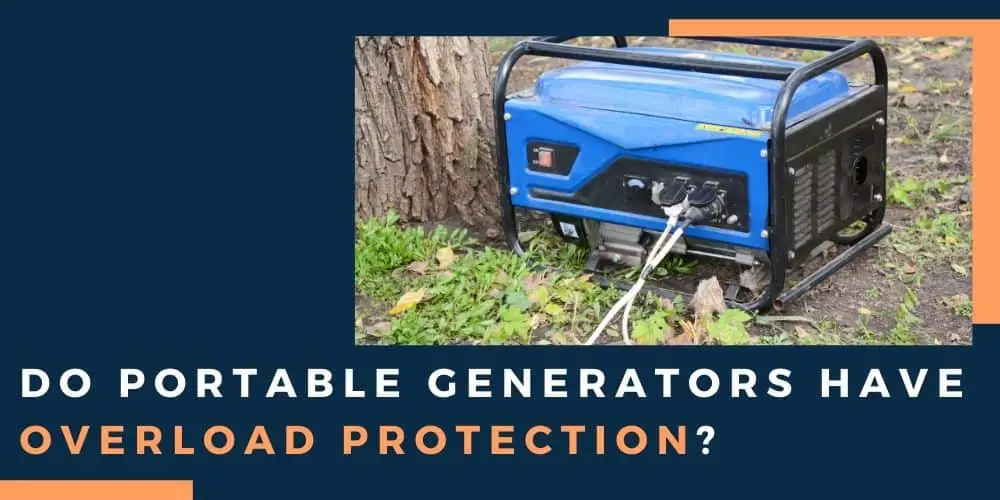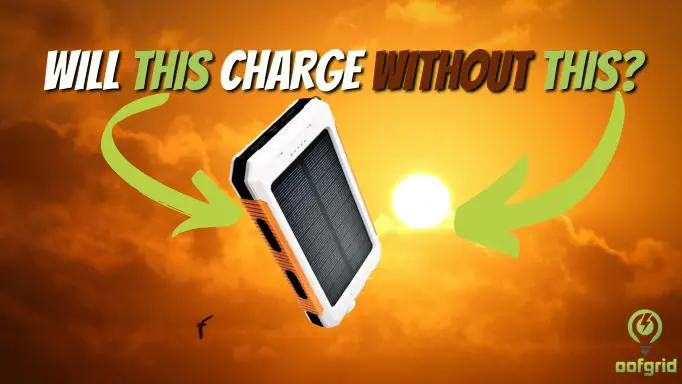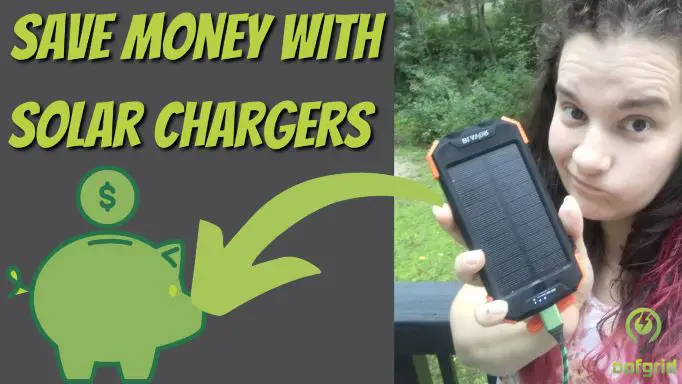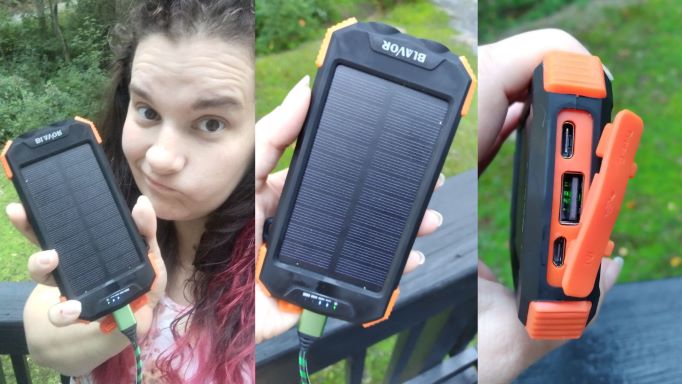Your generator is a vital piece of equipment for both backup power and emergency use. In the event of mains power disruption you will rely on your generator to take over the powering of your property, or alternatively provide a reliable power supply in an off-grid location.
Hopefully, it is properly matched and rated for the appliances it is required to power, but irrespective of your generator’s specifications, you need to be vigilant for overload and its potentially devastating effects.
Overload protection is a critical part of keeping both your generator and connected devices safe, but not all portable generators have this critical feature.
In this article, we will take an in-depth look at portable generator overload and the key signs and consequences you need to know. We’ll also explore best practices for power management that can dial back the risk of an overload event when using your portable generator.
Contents
What is generator overload?
Generator overload is where a generator has a load that exceeds its available generation capacity. An electrical load in this situation is the equipment that your generator is powering.
Where overloading occurs, the performance of the generator will begin to deteriorate as it attempts to service the excess load leading to derangements in power supply, and instability in the frequency of power and the mechanical functioning of the generator. This eventually leads to a loss of power output to connected equipment and potential downstream damage.
The main cause of overloading of a portable generator is that there are simply too many appliances plugged into the generator, leaving the power equipment unable to serve any of them effectively.
It is easy to misinterpret the starting wattage of a generator that is designed to overcome resistance in a cold circuit with the much lower running wattage of the generator, meaning that the appliances connected cannot be served by the actual power output of the generator.

Aside from connecting too much equipment, overloading can occur in an aged generator whose performance has slipped from its specification due to wear and tear.
Mechanical and electronic faults and defects in newer portable generators can also limit their performance, meaning that you find yourself dealing with an overload situation.
What is overload protection?
Overload protection includes devices and mechanisms that protect generators and the equipment they power from damage due to electrical overload.
Generators and their components will vary in their ability to withstand overloads and other electrical faults, but in-built overload protection means that the generator will shut down before it can become damaged or hazardous.
Transformers, in particular, are not designed to be able to sustain a prolonged overload so the overload protection will be carefully calibrated to have a threshold for operating that protects these sensitive components.
Contemporary portable generators will have overload protection mechanisms integrated into their design. Overload protection is usually in the form of resettable circuit breakers that kick in before an overload can become established to protect the generator and the equipment it is serving. Other overload protection features in portable generators include:
- Auto shut-off
- Red or flashing receptacle status lights
- Overload reset buttons
These circuit breakers are calibrated to trip before the generator can be damaged mechanically or thermally by overloading. The circuit breakers that are integrated into portable generators must be able to carry the generators full-load current without continually tripping.
Ideally, they are selected according to the full-load current of the generator and have a current rating that is slightly higher. When the circuit breakers are activated the sudden interruption of current must be executed safely.
Key signs that a portable generator is becoming overloaded:
Nowadays, most portable generators have in-built overload protection, but generators that are older and those with a manufacturing defect may not have a circuit-breaker and attempt to continue running while overloaded.
This means that you should still familiarise yourself with the signs of generator overload especially where you are using a portable generator you are unfamiliar with.
Number one: The power output drops
This is an important sign that you should attend to promptly as it may well herald the deterioration of an overload situation.
An overload can mean that your generator works too hard for too little output of power resulting in a surprisingly poor performance.
Your power output may drop by as much as 50% as your portable generator struggles to muster up the energy to overcome the resistance of far too many connected appliances.
Number two: Your portable generator is overheating
If your portable generator is running hotter than usual, this is a sure sign that you have a generator that is unprotected by a circuit breaker and is going to attempt to run and run and run.
At this point, cooling fans are really not going to make a difference, you must intervene quickly if it is safe to shut the whole thing down.
Portable generators without overload protection will not only overheat but become a fire risk as well as potentially damaging the equipment that it is directly connected to.
Number three: Your portable generator is noisier than usual
Portable generators are not famed for their quietness, but if the noise is excessive with lots of revving you need to consider that it is overloaded and struggling.
Persistent loud noise usually comes from components that are aged or being worn out by meeting the demands of the load. This is definitely a cue to shut down the unit and investigate what is going on.
Number four: There is excessive sparking at the brushes of the portable generator
Another symptom of overload is the sparking of the brushes and burning of the rotating exciters. The brushes are responsible for transferring current from the coils within the generator to the external load.
Sparking of the brushes is a bad sign and usually because the interpoles within the generator are fully saturated and unable to strengthen any further to uplift the output.
Number five: The generator is producing a black sooty exhaust
Overload, overwork, and overheating of your generator will start to produce carbonization of the key components in this precision-engineered equipment.
The carbon particulates will clog the generator and build up on filters, contributing to the overheating of the unit.
When soot starts to show up it means that the components in the generator are becoming irretrievably damaged and the generator is likely to be unsafe.
Act fast when you spot signs of overload to prevent irretrievable damage
It is important to remember that the symptoms of a generator overload are signs of damage, sometimes irreversible, to your generator. You need to act quickly to address overload or both your generator and your appliances will be affected.
If you allow an overloaded generator to continue running the outcomes include:
- Shortening of the lifespan of your portable generator
Generator components like the brushings and alternator become frankly worn down and burnt out through sustained overuse. The longer the overload situation is left to continue, the greater the shortening of your generator’s longevity will be.
- Damage to equipment and appliances using the generator
The power delivered by an overloaded generator is anything but clean. Erratic, non-sine wave power which stops and starts with surges will damage the circuitry of fine electronic devices and precipitate their malfunction.
- Fire or explosions are possible.
The potential for fire or the disaster of an explosion is not to be underestimated. This is why you must switch off and tackle an overloaded generator as soon as you notice the signs. If the external housing of a generator is running hot, the generator should be switched off and allowed to cool before sparking or the outbreak of fire.
Prevent generator overload by practicing good power management with your portable generator
Maintaining good habits with your generator will mean that it should not become overloaded unless it becomes faulty.
It is tempting to plug an entire households appliances into a tiny portable genny, but every manufacturer will clearly warn that the generator capacity should not be overloaded.
Here are some simple steps for calculating running and starting waiting watts for the appliances and equipment you will use with your generator:
- List the devices you will be simultaneously running.
- Next to each item, not down its running wattage.
- Add up the wattages for the total running wattages needed.
- Look for the highest starting wattage amongst your appliances and add this to the total running wattage to get an idea of the starting wattage you will need and if your generator will be up to the task.
Rounding up
Overload protection is critical for keeping your generator at its best and operating safely. Taking care of how you use the generator will help you avoid overloads and continually shut-offs.
A last-minute tip: add electrical load to your generator appliance by appliance allowing the engine to stabilize, after initially starting the generator with no appliances connected.






